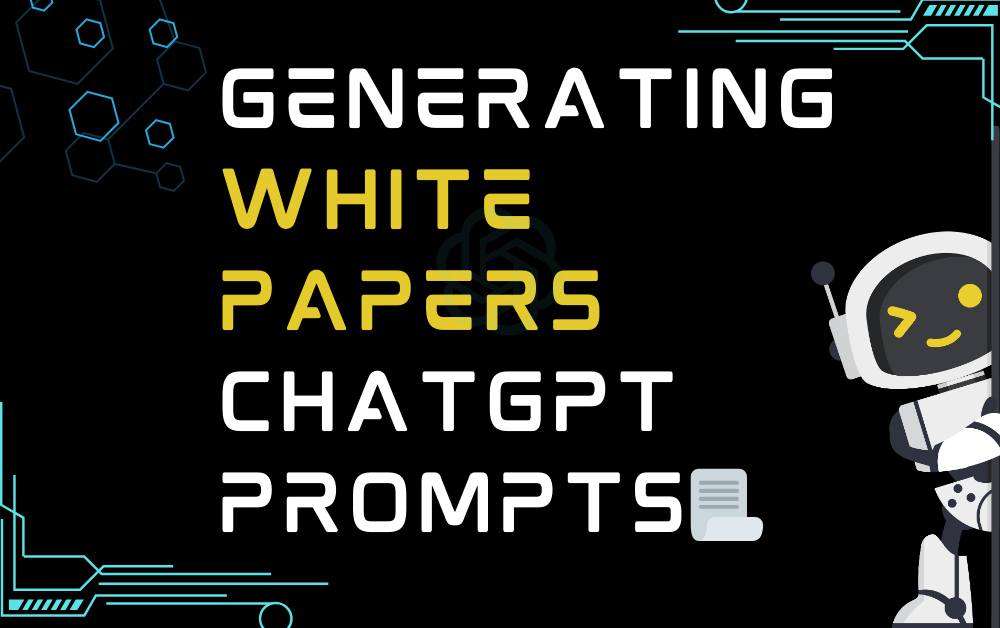White papers are an important tool for businesses and organizations to communicate complex ideas, strategies, and data to their stakeholders. However, creating a white paper can be a time-consuming and challenging task, as it requires extensive research, analysis, and writing skills. ChatGPT can be used to simplify and streamline the process of creating a white paper by providing relevant data and statistics, generating ideas and outlines, and even helping with the writing process. By inputting specific parameters such as the target audience, purpose, and goals of the white paper, ChatGPT can quickly generate a list of potential topics and outlines that can be customized and refined to fit the user’s needs. ChatGPT can save time and resources, as it can quickly generate ideas and outlines that can be developed into informative and engaging white papers.
Generating white papers ChatGPT Prompts
Copy a prompt, replace placeholders with relevant text, and paste it at ProAIPrompts in the right, bottom corner for an efficient and streamlined experience.
Prompt #1
Prompt #2
Prompt #3
Prompt #4
Prompt #5
Generating white papers ChatGPT Tips
Follow these guidelines to maximize your experience and unlock the full potential of your conversations with ProAIPrompts.
Define the purpose and audience of the white paper. Knowing the intended audience and goals of the white paper will help ChatGPT generate relevant and engaging topics and outlines.
Use supporting data and statistics. To make a white paper more compelling and informative, it’s important to include relevant data and statistics that support the key takeaways and arguments. ChatGPT can help identify and provide this data, but it’s important to ensure that it’s accurate and relevant to your white paper.
Refine and customize the generated output. ChatGPT’s suggestions are a starting point, but it’s important to refine and customize the content to fit your brand, audience, and goals. Use the generated output as inspiration, and edit and refine it as necessary to fit your specific needs.

